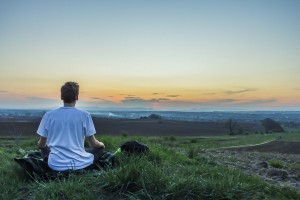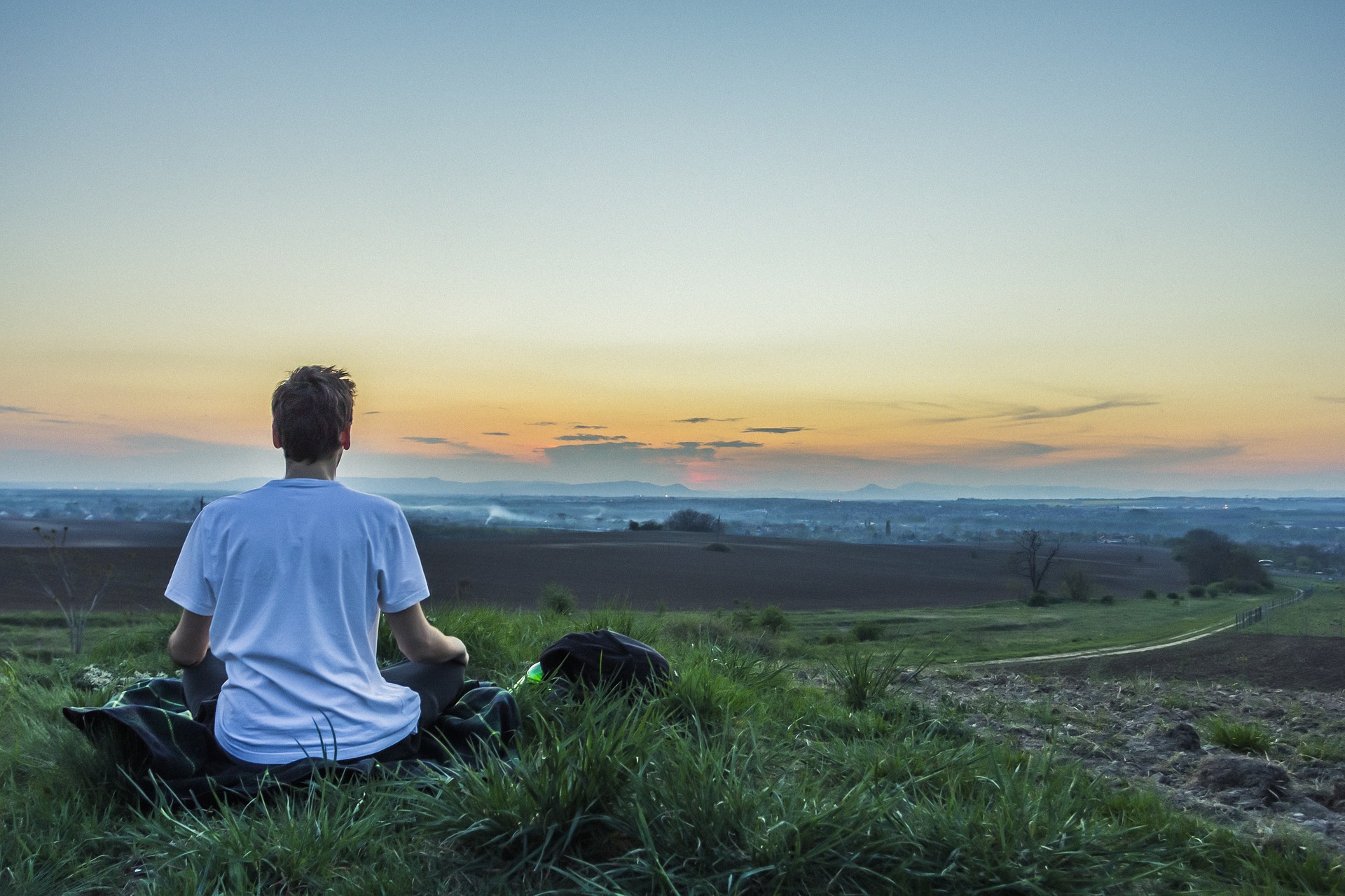We all know how important breathing is. It’s so important, it’s an involuntary action of our bodies, carried out without having to think about it. Our body just does it, because if we stopped breathing long enough, we’d die. Since our body does it involuntarily, we often just forget about it, but the breath is even more powerful than its obvious life-giving function. If we properly utilize the breath, we can control things we’ve wished we could control for our entire lives.
Clear Your Nose

If you’re in the midst of an extreme mucous-inducing illness, this may not work as well. After all, you’re having trouble breathing because your nose is full. But perhaps you’re at the end of a lingering cold, or your just have a slightly stuffy nose that just won’t go away. You can use your ability to control your breathing to unlock a survival mechanism programmed into your body. Try this.
- Take a deep breath in and hold your breath. Plug your nose, and, keeping your mouth shut, let the air go into your nose, meaning, don’t hold your breath with your lungs, hold it by keeping your airways closed. You may have to control it a bit so it doesn’t hurt your ears. You may start to feel that familiar popping feeling of your nasal passages opening up during this step.
- When you can’t possibly hold it in any longer, let the air out, but don’t gasp back in. This is where it gets hard.
- Hold your breath again. Meaning, don’t breath in. Hold the exhale with no air in your lungs.
- When you have to breathe, take only a tiny breath, then exhale again as fully as possible. Repeat this again for as long as necessary or as possible.
This process tells your body that you are suffocating (indeed, you are), and it opens up every passageway possible so you can get some oxygen into your cells. It takes practice, and the more you do it, the better you get. Seem too good to be true? I thought so too. Where was this trick when I was a child, suffering from innumerable illnesses? Do yourself and your kids (if you have them) a favor, learn this trick and pass it on.
Strengthen your Immune System, Reduce Inflammation, Alter the pH of your Body
Wim Hof, a Swede who has broken several Guinness World Records including timed ice immersions, arctic barefoot marathons in only shorts, arctic under-ice swimming feats, and mountain climbing in only shorts, has participated in many scientific studies. Wim Hof is a remarkable individual, for certain, but he swears that anyone can do what he can do. How? With breathing techniques, daily cold immersion, regular exercise, proper nutrition, and a good attitude.
Indeed, he’s been teaching others his methods, and amazing things have happened. In one study, participants who had been practicing his breathing method were injected with e. coli bacteria along with a control group who had not been practicing the breathing. The control group experienced the expected results of e. coli infection while the group who had been practicing the breathing experienced little or no reaction.
You can read more about it here, and here, and here, and here. Wim Hof also has a website, a documentary, and a book you can buy on Amazon. I bought it and read it, and although half of it is written by a young man who has little experience in writing (but who has also experienced amazing results), it is still a very valuable read.
Here is a quick breakdown of the breathing exercise, taken from the first link above:
1) Get comfortable
Sit in a meditation posture, whatever is most comfortable for you. Make sure you can expand your lungs freely without feeling any constriction. It is recommended to do this practice right after waking up since your stomach is still empty or before any meal.2) 30 Power Breaths
Imagine you’re blowing up a balloon. Inhale through the nose or mouth and exhale through the mouth in short but powerful bursts. Keep a steady pace and use your midriff fully. Close your eyes and do this around 30 times or until you feel your body is saturated with oxygen. Symptoms could be light-headedness, tingling sensations in the body, electrical surges of energy.3) The Hold, retention after exhalation
After the 30 rapid succession of breath cycles, draw the breath in once more and fill the lungs to maximum capacity without using any force. Then let the air out and hold for as long as you can without force. Hold the breath until you experience the gasp reflex.4) Recovery Breath
Inhale to full capacity. Feel your chest expanding. When you are at full capacity, hold the breath once more for around 15 seconds. Relax the body deeper as you move further inward, let everything go. Your body knows better than you do. After 15 seconds you have completed the first round. Repeat this for about 4 rounds.Summary
– +-30 times balloon blowing
– Breathe in fully
– Breath out without force and hold until gasp reflex
– Inhale fully and hold for 10-15 seconds.
– Repeat until finished
I think it’s important to note that I’m not getting paid to share this information with you, I just think it’ll help you.
The Power of the Exhale
We’ve all heard someone say, “Just breathe,” when we’re angry. It’s plastered everywhere. However, it’s not quite that simple. Let’s just add a little knowledge to that statement, you can really use breathing to your advantage. Here’s a quick and simple summary:
The two branches of the autonomic nervous system regulate the heart, lungs, circulatory system, and glands. In a sense, they work in opposition to each other: the sympathetic system helps the body gear up for physical activity by accelerating the heart rate, raising blood pressure, and increasing tension in the large skeletal muscles; the parasympathetic system does the opposite—decreasing heart rate, lowering blood pressure, and releasing muscular tension. Inhalation stimulates the sympathetic system, and exhalation stimulates the parasympathetic system. When we are under pressure, thinking stressful thoughts, we make ourselves tighter and more tense by inhaling longer than we’re exhaling. Read more here.
What does this mean? Focus on the exhale. Make the exhale more intense and longer in duration than the inhale, and you will activate the proper bodily response to combat stress, whether that be from exercise, fear, or someone cutting you off i
n traffic.
The inhale should not be forced, it should be a reflex after you have emptied your lungs. That reflex should cause your belly to rise, not your chest. If your chest rises, you can be sure that you are consciously inhaling, and consciously causing your chest to rise (because you know air goes into your lungs which are in your chest). Natural breathing happens in the belly, not the chest.
Likewise, you can use this same knowledge to improve your performance with the inhale. Before a competition, a hard workout, or an extreme climb, focus on your inhale, making the in-breath longer and stronger than the exhale. This will activate the sympathetic system, and your body will be flooded with all those hormones that make you go. When the effort is completed, relax your body by focusing on the out-breath.
Mindfulness of Breath
 In mindfulness meditation, we simply sit and focus on the breath. If your mind wanders, you simply recognize the fact and bring your attention back to the breath. The most important thing to note here is that it is not a perfect practice of a never-wandering mind that will help you. It is actually the act of recognizing wandering and bringing it back to the breath that is helping you.
In mindfulness meditation, we simply sit and focus on the breath. If your mind wanders, you simply recognize the fact and bring your attention back to the breath. The most important thing to note here is that it is not a perfect practice of a never-wandering mind that will help you. It is actually the act of recognizing wandering and bringing it back to the breath that is helping you.
Helping you what? Helping you control your mind. Regular practice of mindfulness meditation will help you recognize emotions when they arise in every day life (whereby you can then question whether they are a reasonable reaction to the stimuli that caused them). Train your Mind, Change your Brain, discusses how this process literally changes the neuron connections in your brain.
Mindfulness meditation doesn’t just change your brain though. It also reduces stress, improves memory and focus, improves immune function, increases empathy, and numerous other benefits that can be seen here, and here, and here.
Want to learn more details about mindfulness meditation? I suggest heading over to wildmind.org. I learned to meditate predominately from this site, and the man who built it, Bodhipaksa, is a kind soul.
Conclusion
The breath is a powerful tool; a tool that has been used for at least thousands of years; a tool that science has only begun to grasp. Using the breath gives us more control than we ever thought possible, and knowing that you have this control over yourself is an empowering and relieving feeling.
